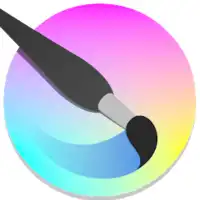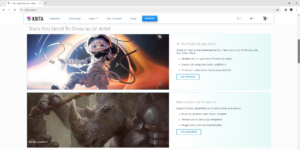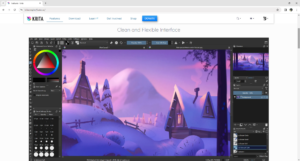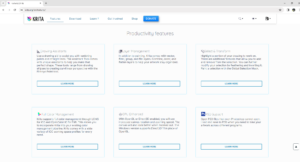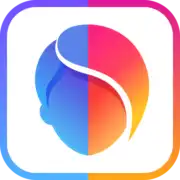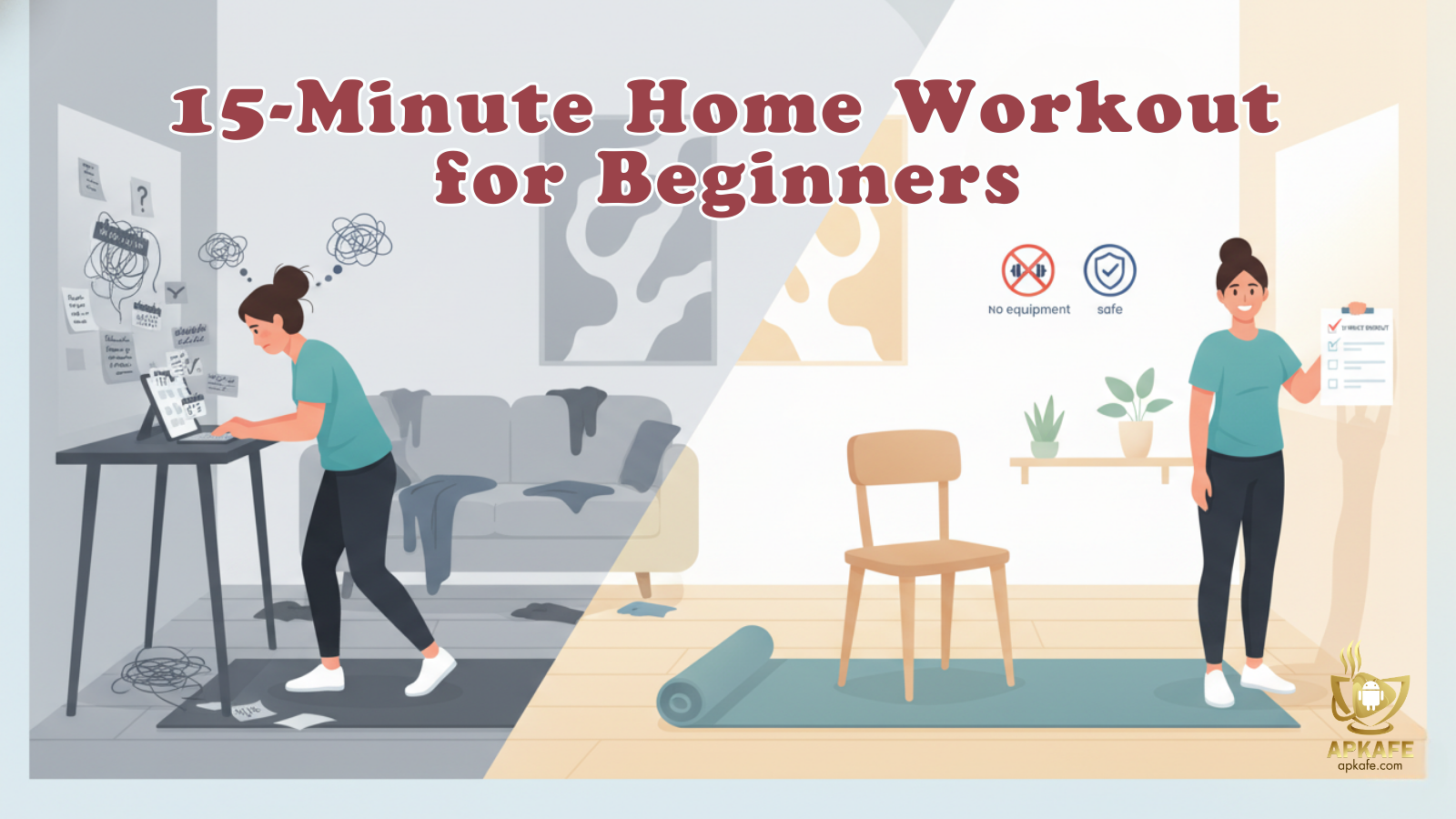Embark on a voyage through time to discover the rich history of Krita, the free and open-source digital painting software. From its inception as a fork of Sodipodi in 2003 to its latest developments in 2023, Krita has continuously evolved to meet the needs of artists worldwide. Join us as we explore Krita's journey through early strokes, growth spurts, solidification, and beyond.
Embark on a voyage through time to discover the rich history of Krita, the free and open-source digital painting software. From its inception as a fork of Sodipodi in 2003 to its latest developments in 2023, Krita has continuously evolved to meet the needs of artists worldwide. Join us as we explore Krita’s journey through early strokes, growth spurts, solidification, and beyond.
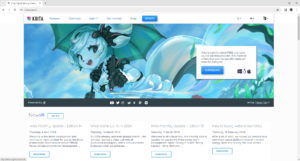
Krita: A Journey Through Time
Krita, the beloved free and open-source digital painting software, has a rich history marked by continuous development. Let’s embark on a voyage through time to explore Krita’s evolution:
Early Strokes (2003-2008)
- A Fork is Born (2003): Krita’s story begins in 2003 as a fork of Sodipodi, a vector graphics editor. The focus in these early years was on establishing core functionalities and supporting the Vietnamese language.
- Adding Artistic Flair (2006): Krita’s artistic capabilities blossomed in 2006 with the introduction of filter and blend effects, allowing artists to create more nuanced and expressive artwork.
Growth Spurt (2009-2016)
- A Community Embraces Krita (2009-2010): This period witnessed a surge in Krita’s popularity as it gained widespread adoption within the design community. Artists were drawn to its user-friendly interface and growing feature set.
- A Flourishing Feature Set (2010-2016): The development team responded to the enthusiastic user base by introducing exciting new features like calligraphy and pattern tools, further enriching the artistic experience within Krita.
- Numbering Revamp (2017): To improve organization and clarity, a new version numbering system was implemented in 2017.
Solidification and Beyond (2017-Present)
- Stability Takes Center Stage (2017-present): The focus shifted towards solidifying Krita’s foundation. The development team prioritized improvements in performance, compatibility, and overall stability to ensure a smooth and reliable experience for users.
- A Long-Term Commitment (2023): The release of the third Long-Term Support (LTS) version in 2023 signified Krita’s commitment to providing a dependable platform for users who rely on it for their creative work.
- Unceasing Evolution (present): Krita’s development journey is far from over. The dedicated development team continues to actively work on new features and enhancements, ensuring that Krita remains at the forefront of free and open-source digital painting software.
Key Milestones on Krita’s Canvas
2003: Krita’s development begins.
2004: First release with Vietnamese user interface.
2006: Filter and blend effects support is added.
2008: The first official version of Krita is released.
2010: Krita gains widespread popularity among artists.
2017: A new version numbering system is adopted.
2023: The third LTS version is released.
From Humble Beginnings to a Creative Powerhouse
Krita’s journey through time reflects a core principle: empowering artists. It has transformed from a basic software utility to a feature-rich platform, constantly evolving to meet the needs of a thriving artistic community. As Krita continues to develop, one thing remains certain: it will provide a welcoming and powerful canvas for aspiring and established artists alike for years to come.
What makes Krita stand out
Krita stands out in the digital painting software world for several reasons:
- Open-source and Free: Unlike many professional painting programs, Krita is completely free and open-source. This makes it accessible to anyone who wants to explore digital art without worrying about licensing costs. The open-source nature also fosters a passionate developer community that continuously improves the software.
- Powerful Feature Set: Despite being free, Krita boasts a surprisingly robust feature set that rivals paid alternatives. This includes a wide variety of brushes that mimic traditional media, advanced brush customization options, support for vector graphics, layer management tools, and non-destructive editing capabilities.
- User-Friendly Interface: Krita offers a clean and intuitive interface that is easy to learn, even for beginners. This allows artists to focus on their creativity rather than struggling with complex menus and controls. The interface can also be customized to suit individual workflows with adjustable workspaces and keyboard shortcuts.
- Constant Development: The Krita development team is dedicated to continuous improvement. They regularly release new features, bug fixes, and performance optimizations, ensuring the software stays current with industry trends and user needs.
- Active and Supportive Community: Krita has a large and active online community of artists and enthusiasts. This community provides a wealth of resources, tutorials, and support for users of all skill levels. Users can learn from each other, share artwork, and get help troubleshooting any issues they encounter.
- Cross-Platform Compatibility: Krita runs smoothly on Windows, macOS, and Linux operating systems. This flexibility allows artists to choose their preferred platform without software limitations.
While Krita offers a compelling combination of features and accessibility, there are also some limitations to consider:
- Learning Curve: Although user-friendly, the sheer number of features can be overwhelming for absolute beginners.
- Limited Raster Editing: Krita excels at vector graphics but may not be as powerful as dedicated raster editing software for photo manipulation tasks.
- Advanced Features: Some high-end design software might offer features Krita lacks, like 3D design or advanced typography options.
Overall, Krita stands out as a powerful, free, and user-friendly option for artists of all levels. Its ongoing development, active community, and commitment to empowering artists make it a top choice for anyone who wants to explore the world of digital painting.
User experience with Krita
Review from users
Positive reviews
This is a huge win! No subscription fees, just pure artistic freedom. The open-source nature means there’s a constantly evolving pool of features and a passionate community for support.
I was surprised by the sheer number of brushes, customization options, and tools available in Krita. It rivals some paid software I’ve used, and it’s constantly being updated with new stuff.
Getting stuck? No worries! The Krita community is amazing. There are tons of tutorials, resources, and forums where you can learn, share your work, and get help from other artists.
Negative reviews
While user-friendly, there are a lot of features. It can be a bit overwhelming for absolute beginners compared to simpler art programs. There’s a bit of a learning curve, but plenty of resources available to help you out.
Krita excels at vector graphics, but for in-depth photo manipulation, you might need a separate program like Photoshop.
Overall, Krita is fantastic. It’s powerful, completely free, and has a thriving community behind it. Whether you’re a complete beginner or a seasoned artist, Krita is definitely worth checking out. It’s a testament to what free and open-source software can achieve, and it’s become my go-to program for digital painting.
My Experience with Krita: Unleashing Creativity with an Open-Source Gem
Krita has been a breath of fresh air for me, especially since I was looking for a free and open-source photo editing alternative. It’s truly a powerful tool, packed with features that rival even commercial software like Photoshop.
I was immediately impressed by how user-friendly the interface is. Even as a beginner, I found it easy to navigate and locate the tools I needed. The customizable workspace was also a big plus. I could set up custom palettes and even import Photoshop brushes, making it feel truly tailored to my workflow.
Of course, no software is perfect. I have noticed that Krita can be quite resource-intensive, especially when working on large images or using complex filters. My older laptop struggled a bit with those tasks. While the interface is friendly, mastering some of the advanced features and workflows definitely requires time and practice. Another minor drawback is that Krita has a smaller plugin ecosystem compared to Photoshop. While there are still useful plugins available, it might be challenging to find specific ones for my needs.
Overall, I’m very happy with Krita. It’s a fantastic alternative to paid photo editing software, offering incredible power and flexibility. Despite its few limitations, the fact that it’s free and open-source makes it a real winner in my book. I would definitely recommend Krita to anyone looking for a free and powerful photo editor – it’s a great choice for both beginners and professionals.
A Guide to Using Krita
Krita, the free and open-source digital painting software, empowers artists of all levels. Here’s a roadmap to get you started on your creative journey with Krita:
- Download and Installation
- Head over to the official Krita website and download the latest version compatible with your operating system (Windows, macOS, or Linux).
- The installation process is straightforward. Follow the on-screen instructions to complete the setup.
- Exploring the Interface
- Upon launching Krita, you’ll be greeted by a clean and customizable interface.
- The canvas takes center stage, where your artistic magic will unfold.
- The top menu bar provides access to various functions like file management, editing tools, and brush settings.
- On the left side, you’ll find the dockers, which house essential tools like brushes, color palettes, layers, and more. You can customize which dockers are displayed and their positions to suit your workflow.
- The right side might have a docker for displaying your brush settings and options for further customization.
- Getting to Know the Brushes
- Krita boasts a vast library of brushes, offering a variety of textures and effects to mimic traditional media like pencils, watercolors, and airbrushes.
- Experiment with different brushes to find ones that suit your artistic style. You can also adjust brush settings like size, opacity, and pressure sensitivity to achieve your desired outcome.
- Working with Layers
- Layers are fundamental to digital painting. They act like transparent sheets stacked on top of each other, allowing you to build your artwork step by step.
- You can create new layers, adjust their opacity, and lock them to prevent accidental edits. This non-destructive editing approach lets you experiment and make changes without ruining your work.
- Painting and Creating
- With your chosen brush and layer selected, you’re ready to paint!
- Krita offers various blending modes that determine how your brushstrokes interact with underlying layers. Experiment with different modes to achieve desired effects.
- Use the color picker to choose your colors and create custom palettes to suit your artwork.
- Saving and Exporting
- When you’re happy with your creation, save your work! Krita supports various file formats like PNG, JPEG, and its native KRA format, which preserves layer information for future editing.
- You can also export your artwork specifically for web use or social media sharing.
Remember, practice makes perfect! The more you explore Krita’s features and experiment with different techniques, the more comfortable and confident you’ll become in expressing your artistic vision. So, unleash your creativity and have fun painting with Krita!
Krita, Polish, or Adobe Lightroom?
Comparison Table
Feature | Krita | Polish | Adobe Lightroom |
Price | Free | Free | $9.99/month |
Editing tools | A wide variety of brushes, layers, and filters | Basic editing tools | Extensive editing tools, including color correction, noise reduction, and lens correction |
Photo Filters | Large selection of artistic filters | Limited selection of filters | Wide variety of filters, including presets and custom adjustments |
Interface | User-friendly and customizable | Simple and straightforward | More complex and professional-looking |
Other features | Supports vector graphics, animation, and scripting | Supports RAW files | Supports RAW files, mobile editing, and integration with other Adobe products |
Best for | Digital artists and illustrators | Casual photogrphers | Professional photographers and serious hobbyists |
Overall
- Krita is a great option for digital artists and illustrators because it offers a wide variety of editing tools and artistic filters.
- Polish is a good option for casual photographers because it offers basic editing tools and a simple interface.
- Adobe Lightroom is the best option for professional photographers and serious hobbyists because it offers a wide variety of editing tools, filters, and advanced features.
Here are some additional details about each software:
Krita
- Krita is free and open-source software.
- It has a wide variety of brushes, layers, and filters.
- It supports vector graphics, animation, and scripting.
- Its interface is user-friendly and customizable.
Polish
- Polish is free software.
- It offers basic editing tools.
- Its interface is simple and easy to use.
Adobe Lightroom
- Adobe Lightroom is paid software.
- It offers a wide variety of editing tools, filters, and advanced features.
- It supports RAW files, mobile editing, and integration with other Adobe products.
- Its interface is more complex and professional-looking.
Ultimately, the best software for you will depend on your individual needs and budget.
Conclusion
Krita’s journey reflects a commitment to empowering artists through continuous innovation and community support. Its open-source nature, powerful feature set, and user-friendly interface make it a top choice for digital artists of all levels. While there may be challenges, Krita remains a valuable asset for unleashing creativity and exploring the world of digital painting.
